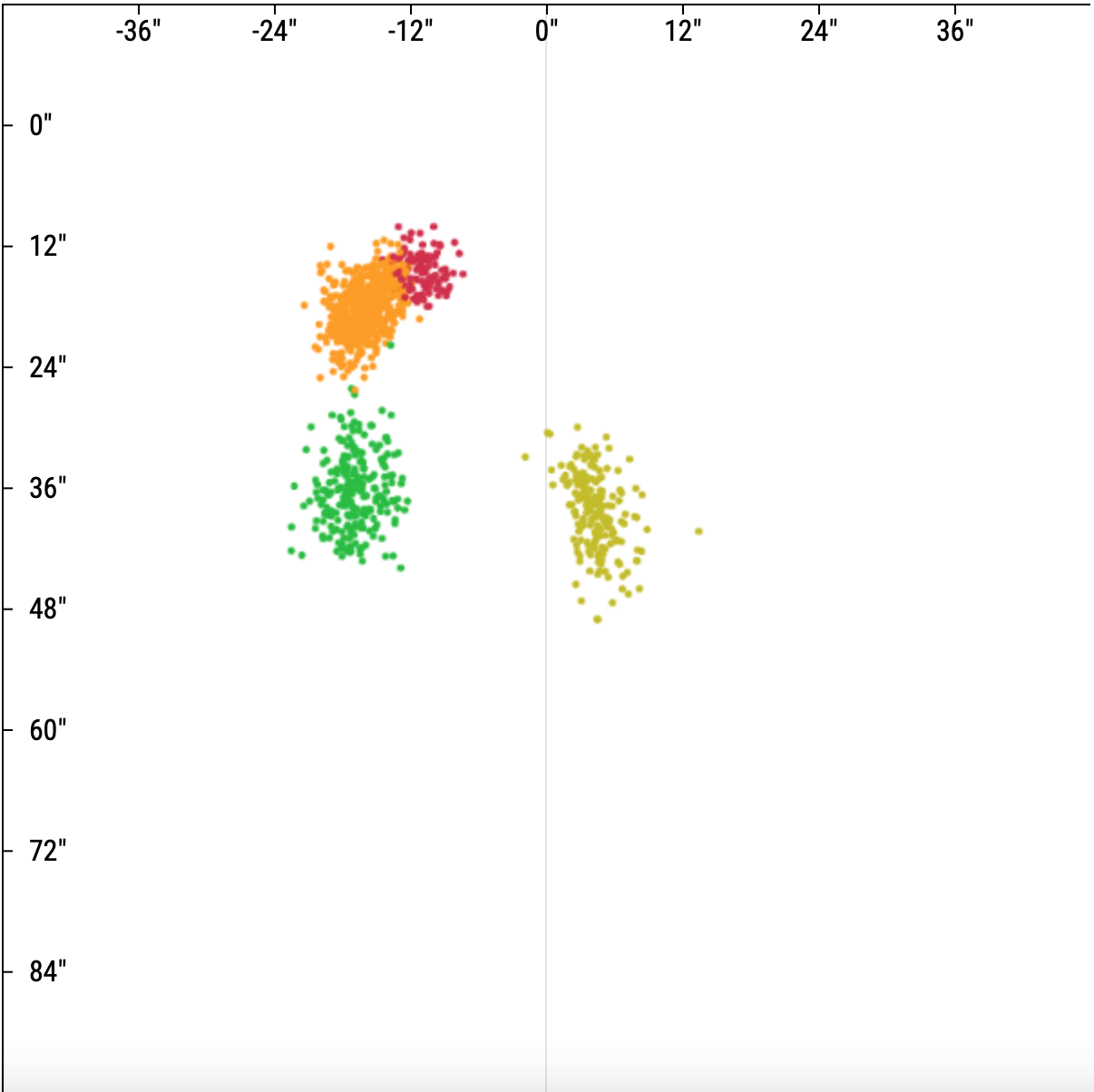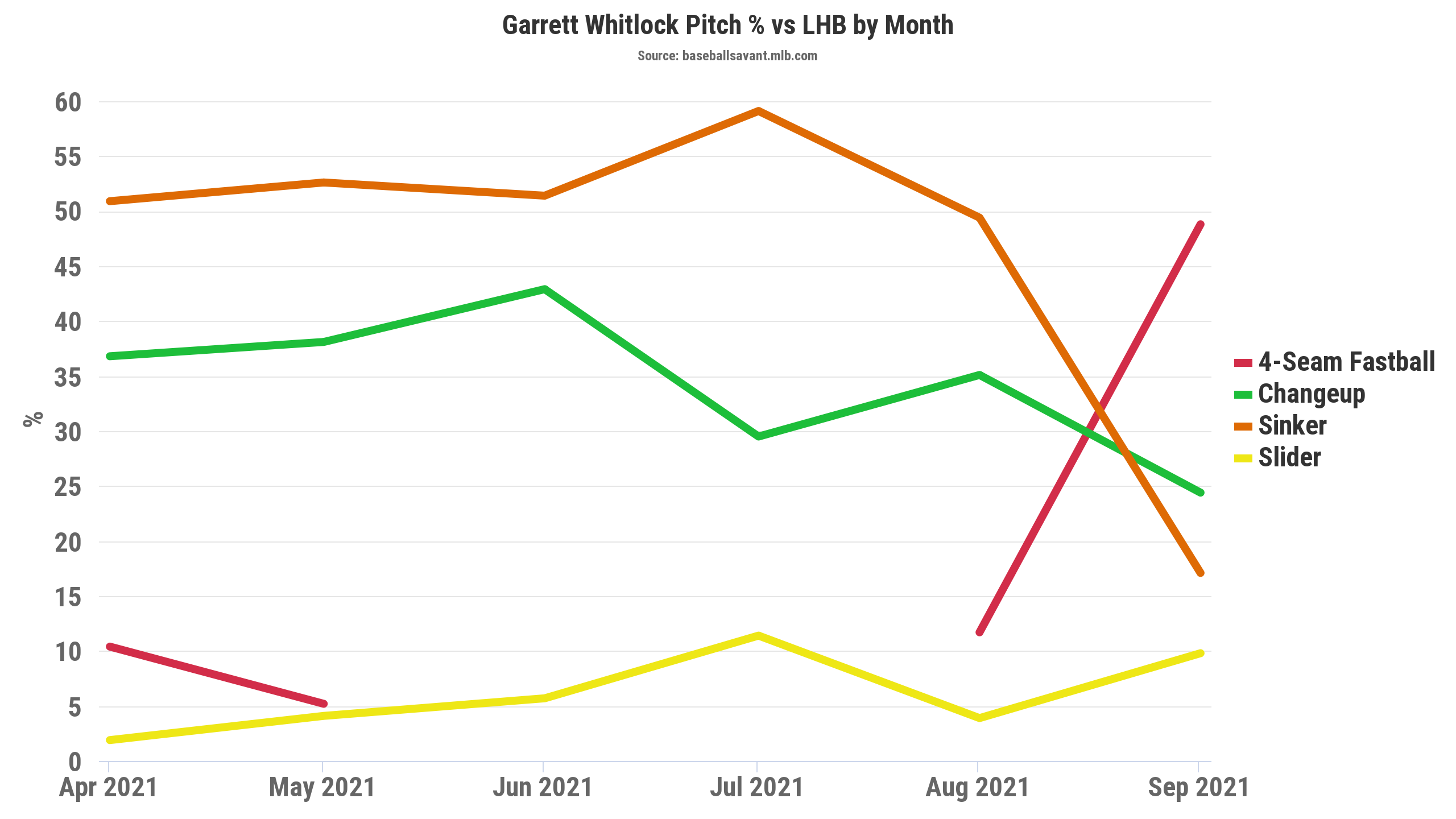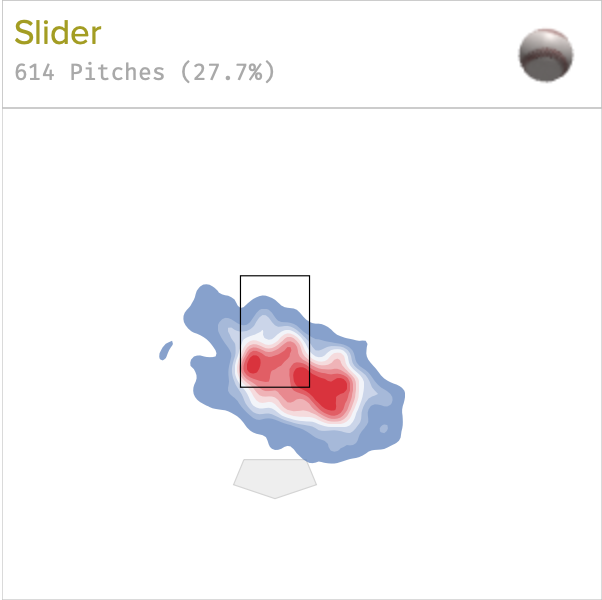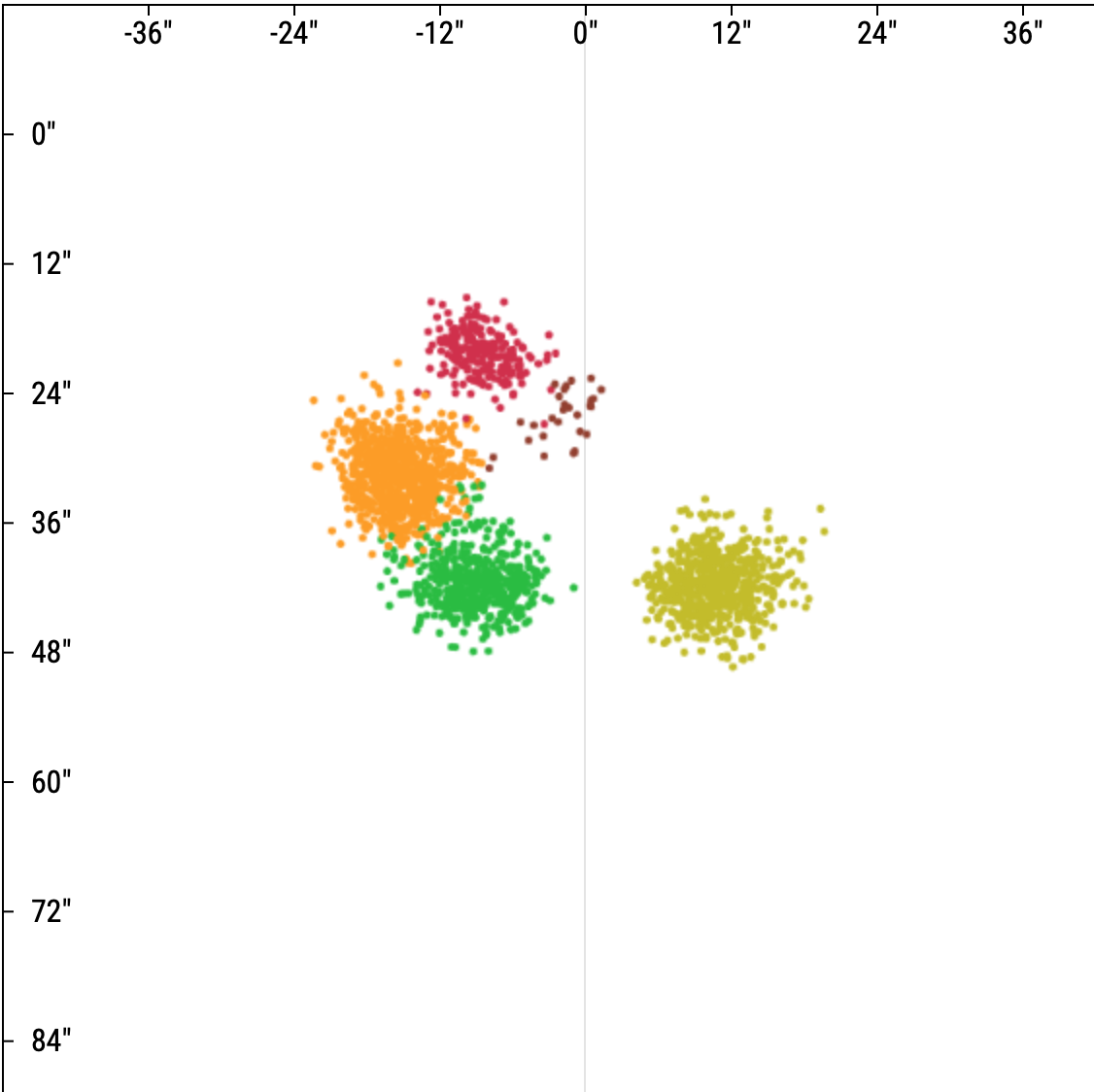Garrett Whitlock came to the Red Sox as an unassuming Rule 5 pickup and blossomed into a key piece of their bullpen in 2021. With uncertainty at the back end of the Sox rotation heading into 2022, the team plans to stretch Whitlock out during Spring Training. Whitlock’s chance of taking a spin in the rotation is as high as ever with the recent news that teammate Chris Sale will miss the start of the season due to a stress fracture in his rib cage. Should Whitlock get a chance to start, whether right out of the gate or later into the season, his 2021 performance is proof that he has the stuff and the makeup to stick the landing.
An Evolving Arsenal
Adding someone like Whitlock was exactly the type of move Red Sox Chief Baseball Officer Chaim Bloom excels at making: an under-the-radar addition with huge upside. Whitlock came up as a starter, but the Sox used him exclusively in the bullpen to ease him back from Tommy John surgery and help acclimate him to the bigs. In a full rookie season as a reliever, Whitlock maintained a sparkling ERA, flashed good punchout stuff, kept walks to a minimum, and excelled at limiting hard contact. He was also exceptionally versatile, as he went two innings or more 19 times while also working in plenty of high-leverage spots. In short, he was the ace of the Red Sox bullpen in 2021.
Whitlock’s main offering is a sinker that he commands well — an appropriate foundation for someone who just changed his number to 22 in honor of his “favorite pitcher ever,” Rick Porcello. The pitch was a strike machine (75% strikes!!) and generated swinging strikes at well above the league-average rate for sinkers (around 7%). Oh yeah, and he can touch 99 with it.
https://gfycat.com/legitimatefirstafricangoldencat
Whitlock’s go-to secondary weapons include a changeup and a slider. Their development throughout the season is a testament to Whitlock’s capacity to learn on the fly and make adjustments, qualities that are crucial for any successful pitcher.
Whitlock throws his changeup at an average of 83 mph, differentiating it well from his mid-90s sinker. He worked extensively with Matt Andriese during Spring Training in 2021 to hone the right feel and intent when throwing the change. The hard work paid off, and the pitch quickly became a staple of Whitlock’s arsenal, pairing exceptionally with his sinker in the early stages of 2021.
https://gfycat.com/perfumedimportantbinturong
When Whitlock recorded a 4.09 ERA in May and opponents started sitting on the sinker and change, he knew another adjustment was needed. Enter his slider, a pitch he had abandoned after the emergence of his potent changeup. With the help of Red Sox pitching coaches Dave Bush and Kevin Walker and clubhouse analyst Jeb Clarke, Whitlock revamped the shape and speed of his sweeper. This new offering gave him a weapon that came in at almost the same velocity as his change but ran away from righties, setting hitters back on the defensive and forcing them to respect his sinker and change again.
https://gfycat.com/grandiosevaguedouglasfirbarkbeetle
Whitlock rounds out his arsenal with a four-seamer that succeeds in a supporting role. Like the sinker, it sits in the mid-to-high-90s, and its break is just different enough from the sinker to stand out. In the following image that plots the vertical and horizontal break of Whitlock’s pitches, the sinker is in orange and the four-seamer is in red:

The difference between the sinker and the four-seamer isn’t dramatic, but it’s enough for them to come in as two distinct pitches. Overall, the four-seamer was outstanding in a limited capacity:
For a four-seam fastball, some of those numbers are pretty eye-popping. (That SwStr% is nearly double the league average for four-seamers!) It’s tough to think these marks will hold so low in the future (this will be addressed a little later), but the point stands that Whitlock’s four-seamer worked well in small doses to keep hitters guessing and earn whiffs.
https://gfycat.com/giddyimprobablearmyant
Whitlock’s arsenal is deep enough for him to make the jump into the rotation. The key, then, is determining how to make the most of his tools once he gets there.
A Tale of Two Approaches
By season’s end, Whitlock had established distinct plans of attack for righties and lefties:
Charts of Whitlock’s pitch mix month-by-month tell the story in further detail, showing the tweaks he made throughout the season. Here’s the breakdown of Whitlock’s pitch mix against righties:

As 2021 went on, Whitlock gradually decreased his changeup usage against righties in favor of his slider. By season’s end, the sweeper was by far his chosen secondary offering to righties, featured about 30 percent of the time in the later months of 2021. By contrast, here’s how he approached lefties:

For much of the season, Whitlock stayed sinker/change against lefties, even with the resurgence of his slider. The chart also explains Whitlock’s four-seam usage against lefties and shows why the 15% rate for the season is misleading. The pitch wasn’t much of a factor until he experimented with throwing it as his primary pitch against lefties in September. The experiment didn’t have the best results, as lefties touched the four-seamer for a .428 wOBA in the final month of the season. It was a small sample, but it’s enough to throw cold water on the idea that Whitlock’s four-seamer would still put up otherworldly results if he ratcheted up its usage. That said, it’s difficult to imagine a four-seamer with great velocity and good run would continue to be that dreadful. The four-seamer should still be good going forward, just maybe not as good as the numbers from 2021 would indicate.
Emphasizing two pitches to hitters is a fine approach coming out of the bullpen but is trickier to pull off when working through an order two or three times. Whitlock could look to one of 2021’s surprise breakouts, Giants ace Logan Webb, for ideas about maximizing his arsenal as a starter.
A Potential Road Map
Webb burst onto the scene in 2021 with results remarkably similar to Whitlock’s: a strikeout rate in the mid-to-high 20s, a low walk rate, and a very low barrel rate. Like Whitlock, Webb’s arsenal consists of a good sinker, a slider that generates whiffs, a changeup that induces weak contact, and a four-seamer he uses sparingly (and a cutter, but that barely saw the light of day). Webb, however, deploys his arsenal in a more balanced fashion:
Webb was sinker/slider-heavy to righties, but he favored his slider more than Whitlock and showed more trust in his change as a third pitch. As for his strategy against lefties, looking month-by-month once again tells the story well:

It took Webb a little while to nail down his approach against lefties, but once he did, the recipe for the sauce stayed the same: a little less than 40 percent sinkers, a little less than 30 percent changeups, a healthy dose of sliders, and a smattering of four-seamers to keep hitters honest.
What works for one pitcher won’t automatically work for another, but Whitlock can take a page out of Webb’s playbook when thinking about how to implement his secondaries. Whitlock’s change and slider proved themselves as very good pitches. Using both in good measure to hitters of any handedness can help him become a more dynamic pitcher, especially if he needs hitters several times a game as a starter.
Whitlock can also learn from Webb about spotting his slider. Whitlock focused on throwing his slider away from righties, but the eye-level was all over the place and the pitch caught a lot of plate. Webb concentrated his sweeper on the lower corners and wasn’t afraid to make hitters chase out of the zone. The heat map on the left is of Whitlock’s slider, and the one on the right is of Webb’s:


It’s pretty impressive that Whitlock’s slider recorded a 39 percent whiff rate while catching that much of the strike zone. If he can bury the slider more often and get hitters to bite on pitches that tumble out of the zone, he could push that whiff rate above 40 percent and take the slider to another level.
Finally, Webb’s arsenal suggests a way Whitlock could upgrade his sinker/four-seam tandem. Webb’s sinker and four-seamer both average about 93 mph, but the difference in how they break is much more pronounced than Whitlock’s fastballs (again, sinker = orange, four-seamer = red):

If Whitlock increased the separation between his sinker and four-seamer while keeping their velocities similar, both pitches could become even more effective.
Conclusion
Whitlock may well start the season in the bullpen, but with the injury histories and murky roles of many other names in the Red Sox staff, it’s far from a given that he’ll stay there. He crafted a solid arsenal of pitches in 2021 and can learn from pitchers like Logan Webb about how to best use it as a starter. Perhaps most importantly, he has shown that he soaks up new information like a sponge and uses it to make adjustments as he needs to. Moving from the bullpen to the rotation can be a tricky leap, but Whitlock is capable of becoming a dependable starter should the Red Sox need him in that role.
Photo by Mark Goldman/Icon Sportswire | Adapted by Michael Packard (@artbyMikeP on Twitter & IG)

